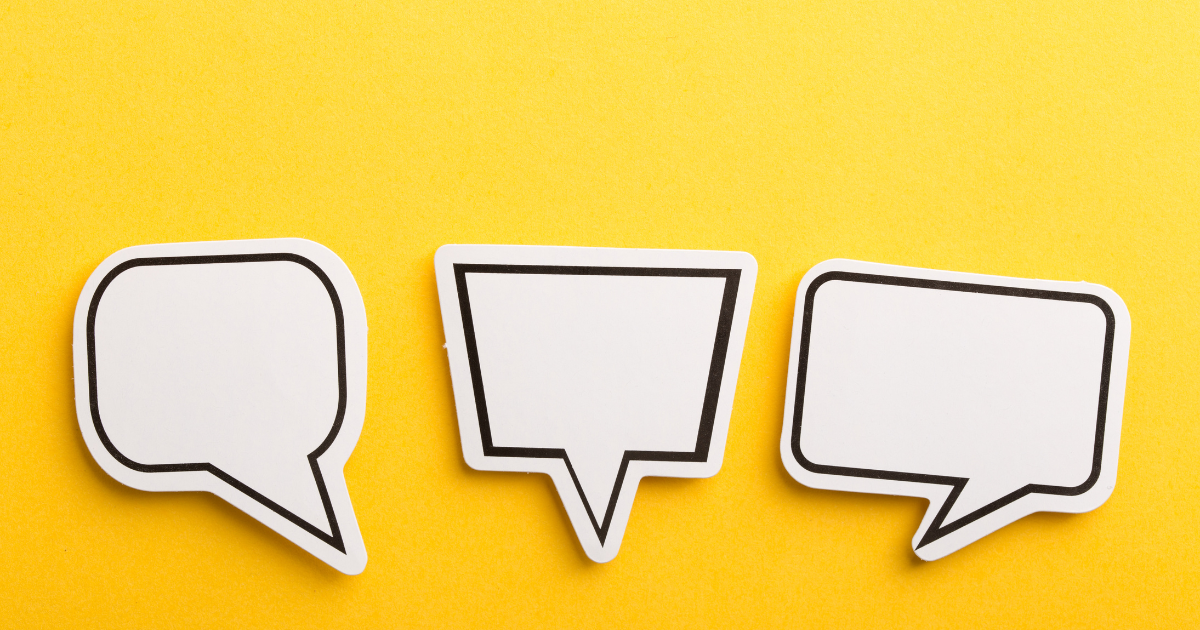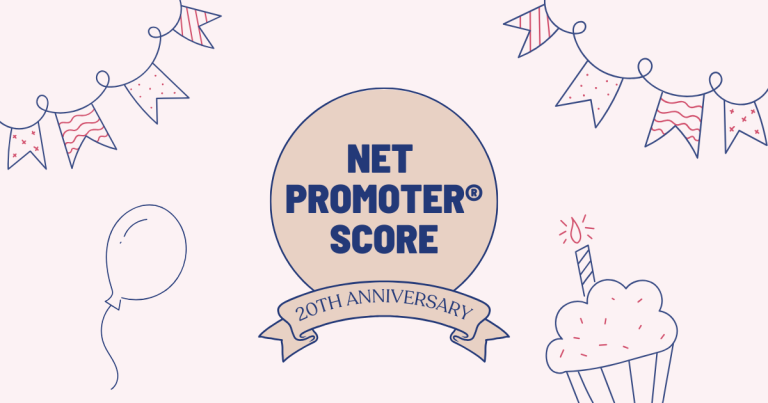The proliferation of multiple customer service channels has increased customers’ expectations in their interactions with brands. Businesses strive to meet these expectations to maintain customer loyalty and increase revenue.
While the Omnichannel approach has enabled seamless customer service on various integrated networks of devices and touchpoints, you must prioritize support channels based on which is best for your business.
Choosing support channels to focus on will help you minimize costs, optimize customer service delivery, enhance the customer experience, and reduce employee attrition.
Keep reading this article to learn about the most effective channels and how to pick them.
Most Effective Customer Service Channels
Here are the most effective communication channels you should consider for your business:
Email is the go-to channel for many customers and brands because it provides an opportunity for seamless support. According to a 2021 survey in the United States, it is the third most preferred customer service channel.
Reasons why emails are efficient:
Flexibility
With Email, the process is more flexible because it is an asynchronous communication channel. This means that the interaction does not have to happen in real time. You and the customer do not have to be present at the exact moment during the process.
This is especially valuable for busy professionals who do not have the time to text in real-time or wait in a long queue for phone support before getting the customer service they need.
Efficiency
Customers can easily outline their complaints or query through Email. You, in turn, can take your time to provide step-by-step guidelines on resolving them with multimedia files attached for further helpful tips when necessary. This eliminates the issue of miscommunication.
Easy documentation
It documents the communication details and provides an easily searchable paper trail. Armed with the communication history with the customer, you can interact with them with the appropriate tone suitable for the situation in case they have experienced the same issue in the past.
Cost-effectiveness
Emails are less expensive than phone calls, especially when it involves a lengthy conversation that may require a back and forth with the customer. In addition, you can easily synchronize with other customer service channels such as chat or voice support.
Best practices for email support
- Provide prompt responses to a customer’s query. But first, have an automated response service to acknowledge the receipt of their Email
- Personalize the email by greeting your customer by name. Always sign off with your name, followed by your position in the company
- Keep it concise and clear
- Maintain an empathetic tone
- Have an email formula handy for addressing every customer’s complaint or query. For example, ‘Acknowledge, Agree, and Reassure’ them
- Ask the customer if they have more questions or complaints
- Follow up 2-3 days later to ensure they are not experiencing further difficulties or with a survey question asking if you have resolved their problem
Phone
Phone support is a more traditional customer support channel and is the most suitable for less technologically savvy customers. It has been named the most preferred channel by 37% of the respondents, ranking above other service channels.
Here is why it is one of the most effective channels:
Human touch
Phone support is the closest thing to face-to-face communication with customers. It provides a more personalized approach to customer support and helps to form a more meaningful connection with the customer.
You can detect the customer’s tone and mood through their voice to know the appropriate communication strategy suitable for the interaction.
Real-time communication
The phone provides real-time customer support services, which is more convenient for customers, especially when their complaints need urgent attention.
Instant feedback
It provides an opportunity for instant customer feedback about the quality of your services, which will help determine the areas that need improvement.
Suitable for more complex problems
Phone support channels are suitable for addressing more complex problems, especially if they require you to provide step-by-step instructions.
Tips for improving your phone support services
- Try to answer a call within three rings
- Incorporate appropriate conversation etiquette in your vocal dynamics, choice of words, communication styles, and general phone manners
- Learn how to de-escalate negative situations through conflict management
- Avoid overdependence on call scripts
- Avoid giving a customer an incorrect response. If you do not know the correct answer to a question, ask to put them on hold and return with the correct response
Live Chat
Live chat is an effective customer service channel that helps resolve a customer’s problem in real time. Its services are convenient and immediate, which is why it is an adequate support channel for customers and brands.
A result of a HubSpot survey of 100 consumers across the US:
- 26% of respondents prefer using live chat over other customer support channels
- 59% want to live chat with only human customer agents
- 66% expect to get a response within five minutes
Reasons why live chat is an effective customer service channel:
Seamless and streamlined process
You can integrate live chat into your website by embedding the software as a widget. It makes it easier for customers to contact you immediately while still on the website instead of navigating away.
It also allows multimedia sharing, such as videos and documents, to enhance customer experiences.
Reduced wait time
It reduces customer wait time, which is always frustrating for most customers, especially when they need the issue resolved quickly.
Provides 24/7 support
Building customer loyalty involves establishing trust where the customer knows they can depend on you to be available to solve their problem in their time of need. This is the service live chat provides.
Ways to make your live chat support channels more efficient
- Use a hybrid system by integrating chatbots with live agents to augment the service and free up time for live agents to handle complex issues. Chatbots should be for resolving simpler issues such as password problems
- Integrate a combination of scripted and spontaneous responses to make the conversation sound more natural to the customer and give them a feeling they are speaking to a human
- Incorporate live chat support for platforms where your customers engage with your business the most
- Ensure there is 24/7 availability by contracting employees in different time zones
- Even when you are not online, provide a form for them to fill in their questions or complaints
- Request feedback after each chat to make the customer feel that their voice matters
- Minimize the delay by providing constant and quick responses
- Integrate the use of tags to describe the problems users mostly encounter. That way, they can be quickly connected to agents who are experts in that area
Live Video
A video chat with a customer enhances the customer service experience by providing a more personalized approach to meeting a customer’s need.
Why is this an effective customer service channel?
Solving complex issues
It is suitable for resolving technical problems which may not be under the purview of the customer and will be more difficult to fix over the phone or by email.
With video chat, you can visualize the particular challenge the customer is facing. You can view their screen, and they can also view yours.
More personalized
Live video provides more personalized interaction with the customer, just like phone calls. But the difference is that you can detect verbal and nonverbal cues to understand their reactions to your messages.
Faster resolution
There is a shorter resolution time because you have viewed the customer’s problems, leading to quicker solutions.
How to offer better live video chat for customers
- Incorporate appropriate conversation etiquette
- Ensure better lightning and good sound quality
- Eliminate background noise
- Pay attention to your body language signals
Social Media
Recently, social media platforms have become the go-to platforms for customers, especially digital natives, because brands are easily accessible on social media.
A McKinsey report states that customers spend 20% to 40% more with companies that usually respond to their requests on social media.
Social media is effective for :
Round-the-clock customer service
Social media provides faster and easier communication as customers use social media as their choice support channel platform because there is a 24/7 availability.
When a brand responds to complaints on social media, it influences how the customer views the brand. According to this survey, 59% of the respondents stated that they develop a more favorable view of a brand when they respond to questions or complaints on this channel.
Crisis management
Social media makes it easy for you to manage a crisis with a customer before it escalates. When a customer’s complaint is resolved quickly, it minimizes the risk of a potential crisis.
How to leverage social media to improve customer experiences
- Provide a quick and prompt response to customers’ complaints
- Identify when to take the issue offline
- Incorporate empathy in your responses
- Prioritize the most critical issue first before addressing other issues
- Utilize social media listening to be more proactive and control the narrative
Messenger Apps & Text Messaging
With the advent of messaging apps such as WhatsApp, Twitter, Telegram, and Facebook Messenger, they have become popular and preferred customer service channels by many customers.
Some customers also use SMS customer support channels to interact with brands, but messenger apps are the most preferred.
Messaging apps are effective because they provide:
Personalized responses
Customers prefer this as a support channel because it provides personalized interactions with brands. According to this report, 71% of consumers expect personalized interactions from companies, and 76% get frustrated when it is not delivered.
Efficiency
These apps can be integrated easily into your customer service software, making it easy to manage multiple platforms using one interface. It also offers an opportunity to exchange multimedia support resources for customers.
Synchronous and asynchronous service
Messaging apps can offer both synchronous and synchronous services depending on the availability of the customer.
Tips for using messaging app channels
- Encourage prompt responses
- Integrate the company’s tone and language during interactions
- Keep the message clear, concise, and straight to the point
Self-service
The self-service option allows customers to get answers to their questions without the support of a customer service representative. Based on the data published by Harvard Business Review, 81% of customers across industries explore using self-service before reaching out to a customer service agent.
Some of the most widely used self-service options include:
Chatbots
Chatbots help businesses optimize customer service delivery by providing faster solutions to customers’ complaints and preempting their queries.
Knowledge bases
A knowledge base provides resources about your products and services that will help answer simple questions customers may have. To enhance your customers’ experiences with this channel, provide a library of resources in different mediums, including videos, webinars, blogs, documents, and voice recordings.
Community Portals and Forums
This channel is an opportunity for your customers to connect and interact with their fellow customers. They can get support, response, and solutions to their queries. It is also an opportunity to build a community of loyalists for your brand.
Your customer service representatives can be a part of this forum to provide a deeper insight into the conversation raised by a client about your product.
Why are forums effective?
Forums help you get feedback about your products/ services and identify common issues customers are experiencing, making it easy for you to review the products and improve.
Furthermore, by providing a forum where customers can openly discuss your products and services, you encourage customer engagement and, consequently, brand loyalty.
How to create an efficient community forum
- Create a structure for the forum based on categories of problems to make it easy to navigate
- Include knowledge base resources when responding to customers’ complaint or questions
- Use screenshots or screen recording when resolving issues
How to Evaluate Which Support Channel(s) to Prioritize
All the above-listed customer service channels are essential and efficient in providing a better customer service experience. However, if you are looking to it is crucial to choose a channel to focus more on, and your decision should be guided by the following:
Look at contact volume per channel
Contact volume per channel is the number of support requests you get on each of the communication channels available to your customers, such as email, phone, messaging apps, social media, etc. This is one of the first things you need to know when thinking of channel prioritisation.
Looking at the amount of contact requests per channel and over time will let you pin down your customers’ channel of choice. That is the channel – or, channels – your client base prefers over others to reach out to your support. This information can prove to be very valuable as it will enable you to discern whether you need to relocate resources, invest in technology to optimise performance, or even train your agents to meet with customer expectations.
Compare your contact volume against the cost per contact
Knowing your customers’ channels of choice is the first part of the equation. The second part is to understand how much it costs to resolve a contact request in said channel. Your cost per contact might be dependant on many different factors such as the type of product or service you offer, the business you’re in, or even the structure of your internal processes – just to name a few. However, examining your cost per contact in relation to channel contact volume will give you much more accurate picture of your customer service operations.
Some support channels have a low cost per contact but high contact volume. While others have a high cost per contact but low volume. You have to draw up a comparison between the two. Knowledge of your cost to serve will help you make more informed decisions.
For instance, WhatsApp may have a high volume of customer service requests and a low cost per contact, while phone support has a lower volume of support requests with a higher cost per contact. Which of those channels should you prioritise in your day to day operations? If you are looking to cut back on costs, you should probably prioritise WhatsApp and try to get the customers that contact you via phone to switch to WhatsApp as well.
On the other hand, if you know that the clients who prefer to engage with you over the phone bring in the biggest chunk of your profits you might want to follow a different path. Which would mean that you prioritise phone support, train your agents to enhance their telephone communication skills, or create response scripts and establish processes that will help your team resolve phone queries faster and more efficiently – thus, reducing costs and increasing satisfaction.
Know your customer base
If you want to be able to meet and exceed customer expectations you have to understand who your customers are, what are their needs, how they use your products, etc. This information is necessary if you are looking to delivery high levels of customer service. Additionally, knowledge as such will enable you to serve your customers at their own terms.
If, for example, you customer base mainly consists of Gen Zers and Millenials, choose digital customer service channels such as social media or messaging apps, and self-service. But if you customers come from older generations, you may consider focusing on emails and phone support.
The customer data you can use to select and promote appropriate support channels are not limited in demographic factors such as age, race, or employment status. They can, also, include information that is stored in your own systems such as what was the channel a customer used the last time they contacted your support, what kind of issues they have had in the past, how many times they had to be get in touch to resolve their problem etc. This data can indirectly point you to the right direction when it comes to channel prioritization.
Let’s say that your data shows that for the most part customers contact you with complex issues that take time to resolve and require technically skilled agents to assist. By this, you should discern that your customers will prefer to speak with a customer service representative and not seek the option of a chat bot or self-service. Therefore, you should shift your attention to channels such as phone or live chat or email. Alternatively, you could build a community which will enable your customer to help each other with issues or questions.
Track and consult your KPIs
There is a plethora of customer service metrics and KPIs (Net Promoter Score, Customer satisfaction, Average Handling Time, First Contact Resolution, etc.) that we all use to measure performance and the customer experience.

Looking for a complete guide to the most popular customer service metrics and KPIs?
Tracking how those KPIs develop over time is one way of evaluating which channels to prioritize. If customer satisfaction is following a downwards trend for a specific channel over a certain time period, you should take a good hard look at that channel and figure out what is it you’re doing wrong – Do you need to fill in skill gaps? Do you have long waiting times? Can you divert traffic to a more efficient channel?
If you want, you could take things a step further and look at how the customer satisfaction correlates with your cost per contact and the contact volume per channel. This exercise will enhance your understanding of channel performance with quantitative and monetary figures and you will be able to make data-driven decisions.
Ask for customer feedback
Who is in a better position to determine the best customer service channels to engage with your brand if not your customers? Asking for feedback is one of the most effective ways to help you evaluate your customer service performance across channels.
Create a survey asking them about their most preferred channel. Include open-ended questions so as not to limit their responses or influence their decision with predefined answers.
Take a deep dive into your customer service data
Customer service data is a gold-mine. Many times, howevewr, we make the mistake of looking at it as stand alone numbers and only from one perspective. To really harness the power of customer service data you have to come at it and examine it through different dimensions.
A low Customer Satisfaction Score might mean that a client didn’t receive the expected level of support – you should therefore better coach your agents. Nonetheless, If you look at your customer satisfaction score from another perspective you might find out that the client wasn’t giving a low score at your agent’s performance but at the fact they had to wait for 20 minutes to actually speak to an agent – which means you might have to add self-service channels to lower contact volume. The only way to really know what is the case is to combine your data, draw comparisons and check for patterns, anomalies, trends and correlations. The great news is you don’t have to do that manually – you can consolidate insights from all available data sources automatically and make an informed decision by utilising customer data analysis software.
Conclusion
An omnichannel approach to customer service delivery is vital. However, to minimize costs, boost loyalty, and increase customer retention, you need to focus on the best channels for your business.
It all boils down to using actionable insights and data analytics to determine which channel takes center stage; that is why data is king in customer service delivery.
Did you like the post?
You might also like:

Surveypal
Everything you need to lead and improve your customer experience. Learn more at surveypal.com, or







